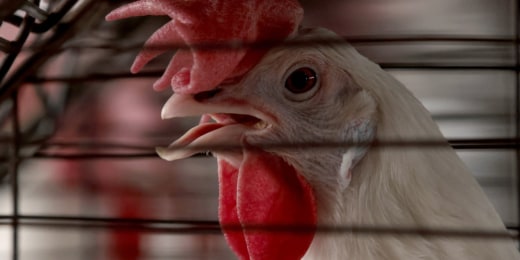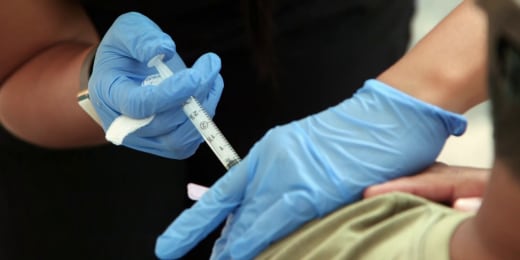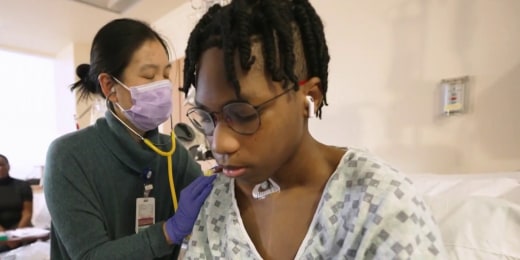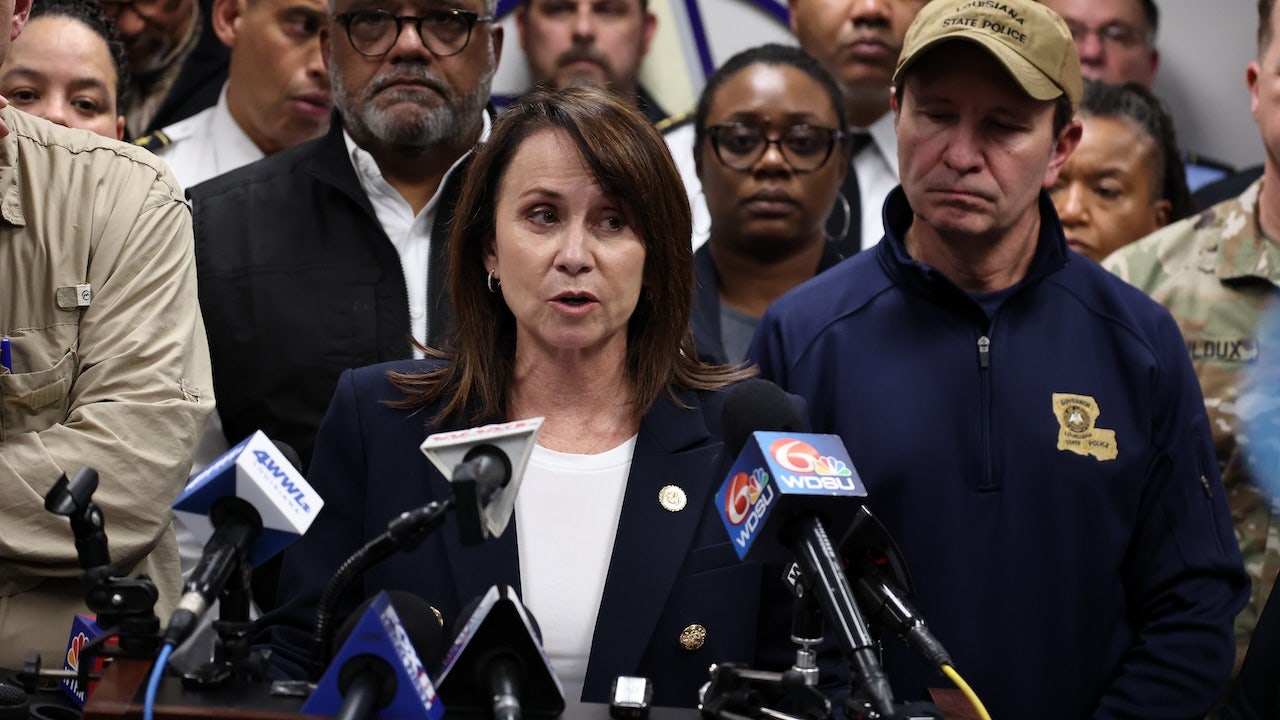Louisiana
Editorial: Fairness requires a second Black-majority House district in Louisiana

Louisiana and a handful of other southern states have tried for decades to gut, if not overturn, the Voting Rights Act of 1965 by challenging the act’s applicability to their racially gerrymandered congressional maps. So far, even the most conservative U.S. Supreme Court in memory refuses to grant their wish.
In fact, the harder some states try to overturn the act, the more they demonstrate why Congress passed it in the first place.
Earlier this month, in a case with profound implications for Louisiana, the Supreme Court issued a 5-4 opinion rejecting Alabama’s congressional districting plan — and affirming the constitutionality, applicability and importance of Section 2 of the Voting Rights Act.
In doing so, the court applied its earlier decisions prohibiting states from minimizing minority voters’ ability to elect their preferred candidates. Now Alabama must draw a second majority-Black district.
And that’s where Alabama’s case hits home in Louisiana.
Days later, the court voted 6-3 to lift a stay order, or “pause,” it issued a year ago in a lawsuit challenging Louisiana’s new congressional districts. That stay order was issued pending the court’s decision in the Alabama case, because both cases presented similar issues.
For example, Louisiana has six House districts but only one that is majority Black, even though Louisiana’s voting-age population is roughly 31% Black.
Similarly, Alabama has seven House districts and only one with a Black majority, despite a voting-age population that is slightly less than 27% Black.
Now that the Louisiana case is back in play, it goes first to the 5th Circuit Court of Appeals, which sits in New Orleans and hears cases appealed from federal trial courts in Texas, Louisiana and Mississippi.
This week, the 5th Circuit ordered attorneys for the litigants — the NAACP Legal Defense Fund and several other voting rights groups on one side, and Secretary of State Kyle Ardoin on the other — to file briefs discussing the impact of the Alabama case on Louisiana’s districting plan.
Given Alabama’s and Louisiana’s similar population profiles, some already predict victory for Black plaintiffs in this state. Others caution that it’s too early to celebrate.
While we feel that fundamental fairness, if not the law, weighs in favor of a second majority-Black district in Louisiana, we note that predicting the judicial decisions is a fool’s errand.
The Alabama case, in fact, is a case in point. Almost no one thought the Supreme Court’s new 6-3 conservative majority would let the Voting Rights Act stand once it agreed to hear Alabama’s appeal — especially after that same majority overturned Roe v. Wade’s half-century of abortion rights last year.
Yet, here we are, wondering if Louisiana will find a way around the high court’s surprising Alabama decision.
Procedurally, the Louisiana case is in a sort of limbo. The 5th Circuit could decide the case itself based on arguments presented to it and to trial Judge Shelly Dick in Baton Rouge, who ruled last year that Louisiana’s new congressional districts were racially gerrymandered in violation of the Voting Rights Act.
Or the appellate judges could send the case back to Judge Dick for a full-blown trial that would create an even larger record on appeal.
No matter what the 5th Circuit or Judge Dick may decide, the case is bound to be appealed again — and that will take time. Hopefully, not too much time.
It’s worth noting that, in lifting the stay it imposed last year, the Supreme Court expressly noted that its order “will allow the matter to proceed … in advance of the 2024 congressional elections in Louisiana.”

Louisiana
U.S. reports first human death from bird flu in Louisiana

IE 11 is not supported. For an optimal experience visit our site on another browser.
-

New study raises more questions about fluoride in drinking water
02:25
-

First human death from bird flu reported in U.S.
00:43
-
Now Playing

U.S. reports first human death from bird flu in Louisiana
03:00
-
UP NEXT

Start TODAY trainers share workouts to kickoff your fitness journey
04:36
-

Meet the all-star trainers on the Start TODAY app
05:59
-

This pharmacy prescribes poetry to help people through hard times
02:49
-

See U.S. News & World Report’s list of best diets for 2025
03:21
-

CDC says flu is on the rise with emergency room visits ‘very high’
00:30
-

Surgeon general calls for tougher warnings about alcohol and cancer risk
01:28
-

Gene therapy treatment gives new hope to sickle cell patients
03:02
-

Broccoli sold at Walmart recalled in 20 states for possible listeria risk
00:26
-

Try these self-care products that are perfect for a New Year’s reset
03:34
-

Get an inside look at World Spa’s global wellness treatments
04:52
-

Why an abundance mindset could be the key to boosting happiness
04:59
-

Canyon bathing, contrast therapy, more 2025 wellness travel trends
04:19
-

Plug into real life: Tips to reduce phone use and stay present
04:01
-

Find the joy and drop the judgment with this workout for beginners
05:42
-

Level up your skincare in 2025 with multitasking products and AI
03:43
-

Stay optimistic in the new year with these wellness tips
04:25
-

Help hit your 2025 weight loss goals with these diets
04:27
-

New study raises more questions about fluoride in drinking water
02:25
-

First human death from bird flu reported in U.S.
00:43
-
Now Playing

U.S. reports first human death from bird flu in Louisiana
03:00
-
UP NEXT

Start TODAY trainers share workouts to kickoff your fitness journey
04:36
-

Meet the all-star trainers on the Start TODAY app
05:59
-

This pharmacy prescribes poetry to help people through hard times
02:49
Louisiana
Nussmeier, Weeks Named Louisiana Players of the Year

BATON ROUGE – LSU’s quarterback Garrett Nussmeier and linebacker Whit Weeks were top honorees on the 2024 edition of the All-Louisiana College Football Team announced by the Louisiana Sports Writers Association.
Nussmeier was named the Offensive Player of the Year, while Weeks was named the state’s Defensive Player of the Year.
Running back Ahmad Hardy of ULM was named the freshman of the year. Tulane wide receiver Mario Williams, was named the newcomer of the year for first-year Louisiana players. Coach Michael Desormeaux, who led the Ragin Cajuns to the Sun Belt Conference championship game, was named the state’s top coach in 2024.
The team was chosen by a group of voters from state media relations and communications office and selected media based on nominations made by each University. School media relations voters could not vote for players from their own school.
Nussmeier, who finished his junior season Tuesday with an MVP performance in the Texas Bowl, through for 3,735 yards and 26 touchdowns during the regular season. His 312 completions ranked No. 2 in LSU history, while with his bowl game his over 4,000 yards passing also ranked second. He topped the 300-yard mark eight times, including a career best 409 yards versus South Alabama. The Lake Charles product had five games with three TDs or more.
Weeks, a sophomore linebacker from Watkinsville, Georgia, earned defensive honors after a first-team All-SEC season that saw him lead the Tigers in tackles with 119. He was ranked No. 3 in the SEC and No. 11 nationally in total tackles and tackles per game (9.92). He had a career best 18 tackles in the overtime win over Ole Miss and 17 tackles versus both Oklahoma and Alabama.
Will Campbell was a first team offensive line selection, with Kyren Lacy named a first-team wide receiver.
On the second team offense was lineman Emery Jones and tight end Mason Taylor. The second team defense for LSU was represented by lineman Savion Jones, linebacker Bradyn Swinson and defensive back Zy Alexander.
Damian Ramos was named the second team kicker.
Two teams representing offense, defense and specialists were selected with ties allowed for position allowed on the second team as necessary. The complete All-Louisiana selections:
LSWA ALL-LOUISIANA TEAM
FIRST TEAM OFFENSE
POS/NAME/SCHOOL/CL/HOMETOWN/NOTES
OL/Landon Burton/Louisiana/Sr./Lafayette, La./First Team All-SBC
OL/Will Campbell/LSU/Jr./Monroe, La./First-Team AP, Walter Camp, AFCA All-America
OL/AJ Gillie/Louisiana/Sr./Natchitoches, La./First Team All-SBC, HM All-America (CFN)
OL/Shadre Hurst/Tulane/So./Cartersville, Ga./First Team All-AAC, HM All-America (CFN)
OL/Evan Roussel/Nicholls/Sr./Lutcher, La./SLC OL of Year, Second Team AP FCS A-A
TE/Terrance Carter/Louisiana/So./Killeen, Texas/First Team All-SBC; 48 rec., 4 TDs
WR/Tru Edwards/Louisiana Tech/Sr./Shreveport, La./First Team All-CUSA; 77 rec., 897 yds, 6 TDs
WR/Kyren Lacy/LSU/Sr./Thibodaux, La./Second Team All-SEC; 58 rec., 866 yds, 9 TDs
RB/Ahmad Hardy/ULM/Fr./Monticello, Miss./SBC Freshman of Year; 1,351 rush yds, 13 TDs
RB/Makhi Hughes/Tulane/So./Birmingham, Ala./AAC RB of Year; HM A-A (CFN); 1,372 yds, 13 TDs
QB/Garrett Nussmeier/LSU/Jr./Lake Charles, La./3,735 pass yards; 26 TDs; 3 rushing TDs
FIRST TEAM DEFENSE
POS/NAME/SCHOOL/CL/HOMETOWN/NOTES
DL/David Blay/LA Tech/Jr./Levittown, Pa./First Team All-CUSA; 46 tackles, 10.5 TFL, 6.5 sacks
DL/Ckelby Givens/Southern/Jr./Shreveport, La./SWAC Co-Def. POY; Buchanan Award finalist; 28.5 TFL
DL/Patrick Jenkins/Tulane/Sr./New Orleans, La./First Team All-AAC; 30 tackles, 6.5 TFL, 4.5 sacks
DL/Jordan Lawson/Louisiana/Jr./Brandon, Miss./Second Team All-SBC; 38 tackles, 9.5 TFL, 5.5 sacks
LB/Andrew Jones/Grambling/Jr./Marrero, La./SWAC Co-Def. POY; Buchanan Award finalist; 20.5 TFL
LB/K.C. Ossai/Louisiana/Sr./Conroe, Texas/First-Team All-SBC; 110 tackles, 2.5 TFL, 1 INT
LB/Whit Weeks/LSU/So./Watkinsville, Ga./First Team All-SEC; 119 tackles, 10.0 FGL, 3.5 sacks, 1 INT
DB/Keydrain Calligan/Southeastern/Sr./New Iberia, La./All-SLC; 39 tackles, 1 INT
DB/Tyrone Lewis/Louisiana/Sr./Hammond, La./Second Team All-SBC; 2.5 TFL, 0.5 sacks, 4 INT, 1 FR
DB/Keyon Martin/Louisiana/Sr./Fort Lauderdale, Fla./Second Team All-SBC; 50 tackles, 2 TFL, 2 INT
DB/Wydett Williams/ULM/Jr./Lake Providence, La./Third Team All-SBC; 100 tackles, 4.5 TFLs, 2 FR, 3 INT
FIRST TEAM SPECIALISTS
P/Finn Lappin/McNeese/Fr./Melbourne, Australia/All-SLC 1st Team; 46.1 avg; 21 punts 50+; long 60+
K/Kenneth Almendares/Louisiana/Sr./Clute, Texas/Lou Groza Winner, First-Team A-A; 1st FBS 27 FGs
RS (tie)/Darius Lewis/Southeastern/Sr./New Orleans, La./First Team All-SLC; FCS leader 18.5 yds per ret. RS (tie)/Rayshawn Pleasant/Tulane/So./West Monroe, La./Second Team All-ACC specialist, 2 KR TDs
OFFENSIVE PLAYER OF THE YEAR – Garrett Nussmeier, LSU
Vote – Nussmeier 10.5; Ben Wooldridge (UL) 8.5; Makhi Hughes (TU) 8; Ahmad Hardy (ULM) 1; no vote 1
DEFENSIVE PLAYER OF THE YEAR – Whit Weeks, LSU
Vote – Weeks 14, Andrew Jones (GSU) 5, Eli Ennis (Nich) 3, K.C. Ossai (UL) 3, Tyler Grubbs (TU) 2, Ckleby Givens (SU) 1, no vote 1
FRESHMAN OF THE YEAR – Ahmad Hardy, ULM
Vote – Hardy 14, Darian Mensah (TU) 9, Caden Durham (LSU) 5; no vote 1
NEWCOMER OF THE YEAR – Mario Williams, Tulane
Vote – M. Williams 11; Wydett Williams (ULM) 9; Warren Peeples (SLU) 6; Vincent Paige (SU) 2; no vote 1
COACH OF THE YEAR – Michael Desormeaux, Louisiana
Vote – Desormeaux 14; Jon Sumrall (TU) 7; Terrance Graves (SU) 4; Bryant Vincent (ULM) 3; no vote 1
SECOND TEAM OFFENSE
OL – Derrick Graham, Tulane (Jr., Lake Minneola, Fla.); Emery Jones, LSU (Jr., Baton Rouge, La.); Cole LeClair, McNeese (Sr., Middleburg, Fla.); Josh Remetich, Tulane (Sr., New Orleans, La.); Brockhim Wicks, Southeastern (Sr., Plaquemine, La.).
TE – Mason Taylor, LSU (Jr., Plantation, Fla.)
WR – Darius Lewis, Southeastern (Sr., New Orleans, La.); Mario Williams, Tulane (Sr., Tampa, Fla.)
RB – Joshon Barbie, McNeese (So., New Orleans, La.); Daylon Charles, La. Christian (Sr., Gueydan, La.); Collin Guggenheim, Nicholls (Sr., Kenner, La.)
QB – Ben Wooldridge, Louisiana (Sr., Pleasanton, Ca.
SECOND TEAM DEFENSE
DL – Logan Brimmer, La. Christian (Sr., Boutte, La.); Savion Jones, LSU (Sr., Vacherie, La.); Rasheed Lovelace, Nicholls (So., Pensacola, Fla.); Warren Peeples, Southeastern (Sr., Stone Mountain, Ga.)
LB – Eli Ennis, Nicholls (Jr. Ohatchee, Ala.); Blake Gotcher, Northwestern State (Sr., Little Elm, Texas); Bradyn Swinson, LSU (Sr., Douglasville, Ga.)
DB – Zy Alexander, LSU (Sr., Loreauville, La.); Bailey Despanie, Tulane (Jr., Lafayette, La.); Khamron Ford, Southeastern (Sr., Olive Branch, Miss.); Yusef Leak, McNeese (Sr., Orlando, Fla.); Tyree Skipper, Louisiana (Jr., New Orleans, La.); Jacob Wilson, Centenary (Fr., Shreveport, La.)
SECOND TEAM SPECIALISTS
P – Alex Mahler, Southeastern (So., Vacherie, La.)
K — Damian Ramos, LSU (Jr., Baltimore, Md.)
Louisiana
Louisiana AG to launch full review of New Orleans security plan after Bourbon Street attack: report

Louisiana’s top attorney plans to open a full review into the security planning that went into the Sugar Bowl and New Year’s Eve as concerns continue to mount about whether New Orleans officials could have done more to prevent the deadly attack on Bourbon Street that killed 14 people and injured dozens more, according to a report.
NOLA.com reported that Louisiana Attorney General Liz Murrill said she plans to make a formal announcement on Monday about the full review, noting that New Orleans Police Superintendent Anne Kirkpatrick has pledged to provide her complete support and cooperation.
New Orleans locals and visitors have been questioning why a temporary barrier intended to prevent cars from entering Bourbon Street, where Shamsud-Din Jabbar drove a truck through a New Year’s crowd in the early morning hours of Jan. 1, was set down instead of up, allowing vehicles to pass.
The temporary metal barriers were installed on Bourbon Street and other areas of the French Quarter in mid-November as the city was in the process of removing old bollards and replacing them with stainless steel bollards. That work was expected to continue through January.
NEW ORLEANS BARRICADE OVERSIGHT IN ‘TARGET AREA FOR TERRORISM’ DURING PRIME SEASON RAISES CONCERNS
Attorney General of Louisiana Liz Murrill speaks to the media during a press conference on January 1, 2025, in New Orleans, Louisiana. (Attorney General of Louisiana Liz Murrill )
Official recommendations for New Orleans’ security measures in the French Quarter, as part of a $2.3 billion infrastructure project that began in 2017, included the installation of new bollards on Bourbon Street to prevent mass casualty events that the FBI identified as a potential threat in the popular tourist area.
Security recommendations for the area included street cameras, a central command center, better lighting and high-quality bollards that are also used by the U.S. government near its official buildings.
NEW ORLEANS ATTACK: INVESTIGATION CONTINUES, AS FBI SAYS NO OTHER SUSPECTS INVOLVED

Tourist walk past temporary barriers on Orleans and Bourbon Street, Thursday, Jan. 2, 2025 in New Orleans. (AP Photo/George Walker IV)
Former FBI official Bill Daly, a security and risk management adviser, told Fox News Digital that the “Achilles’ heel” in the Jan. 1 tragedy was that the temporary measures used on New Year’s Eve did not provide the same level of protection as was previously intended, designed and envisioned in the 2017 report.
“Temporary barricades are used extensively. They’re used, for instance, by the New York City Police Department in Times Square, to close off all the side streets leading to Times Square,” Daly said.
He explained that in New York City, authorities place cement blocks on the sidewalk and in the middle of the street as temporary barricades, and also use some vehicles like garbage trucks and dump trucks to block the road.
NEW ORLEANS TERROR SUSPECT’S BROTHER SAYS ATTACK IS SIGN OF ‘RADICALIZATION’: REPORT

A barricade on Bourbon Street (right) is back up on Jan. 2, the day after the terrorist attack, while a barrier on another street in the French Quarter (left) appears down on Jan. 2. (Kat Ramirez for Fox News Digital)
Along with the investigation from Murrill, some city council members said they plan to conduct their own investigations into the security measures that were in place on the morning of the attack.
Murrill told NOLA.com she has spoken with City Council member Helena Moreno as well as District Attorney Jason Williams and other officials, adding that she intends to speak with others about her plans for a full review into security.
CLICK HERE TO GET THE FOX NEWS APP
“Everyone is committed to getting a complete picture of what was done or not done and, importantly, what needs to change so we can prevent this from ever happening again,” she said.
Murrill’s office did not immediately respond to Fox News Digital’s request for comment on the matter.
Fox News Digital’s Audrey Conklin, Garrett Tenney and Ashley Papa contributed to this report.
-

 Health1 week ago
Health1 week agoNew Year life lessons from country star: 'Never forget where you came from'
-
/cdn.vox-cdn.com/uploads/chorus_asset/file/24982514/Quest_3_dock.jpg)
/cdn.vox-cdn.com/uploads/chorus_asset/file/24982514/Quest_3_dock.jpg) Technology1 week ago
Technology1 week agoMeta’s ‘software update issue’ has been breaking Quest headsets for weeks
-

 Business6 days ago
Business6 days agoThese are the top 7 issues facing the struggling restaurant industry in 2025
-

 Culture6 days ago
Culture6 days agoThe 25 worst losses in college football history, including Baylor’s 2024 entry at Colorado
-

 Sports5 days ago
Sports5 days agoThe top out-of-contract players available as free transfers: Kimmich, De Bruyne, Van Dijk…
-

 Politics4 days ago
Politics4 days agoNew Orleans attacker had 'remote detonator' for explosives in French Quarter, Biden says
-

 Politics4 days ago
Politics4 days agoCarter's judicial picks reshaped the federal bench across the country
-

 Politics2 days ago
Politics2 days agoWho Are the Recipients of the Presidential Medal of Freedom?

















